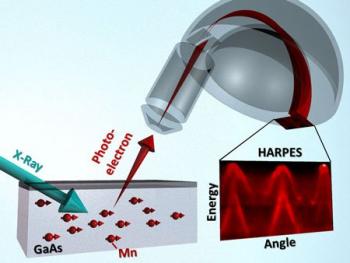Researchers developed a new technique called HARPES (Hard x-ray Angle-Resolved PhotoEmission Spectroscopy) that can be used to investigate the bulk electronic structure of different materials. In the first application, they checked the bulk electronic structure of the prototypical dilute magnetic semiconductor gallium manganese arsenide, and discovered that the materialâs ferromagnetism arises from both of the two different mechanisms that have been proposed to explain it. Understanding the source of ferromagnetism in dilute magnetic semiconductors is an important milestone toward using these materials in Spintronics devices.

HARPES, which is based on the photoelectric effect, enables scientists to study bulk electronic effects with minimum interference from surface reactions or contamination. It also allows them to probe buried layers and interfaces that are ubiquitous in nanoscale devices, and are key to smaller logic elements in electronics, novel memory architectures in spintronics, and more efficient energy conversion in photovoltaic cells.